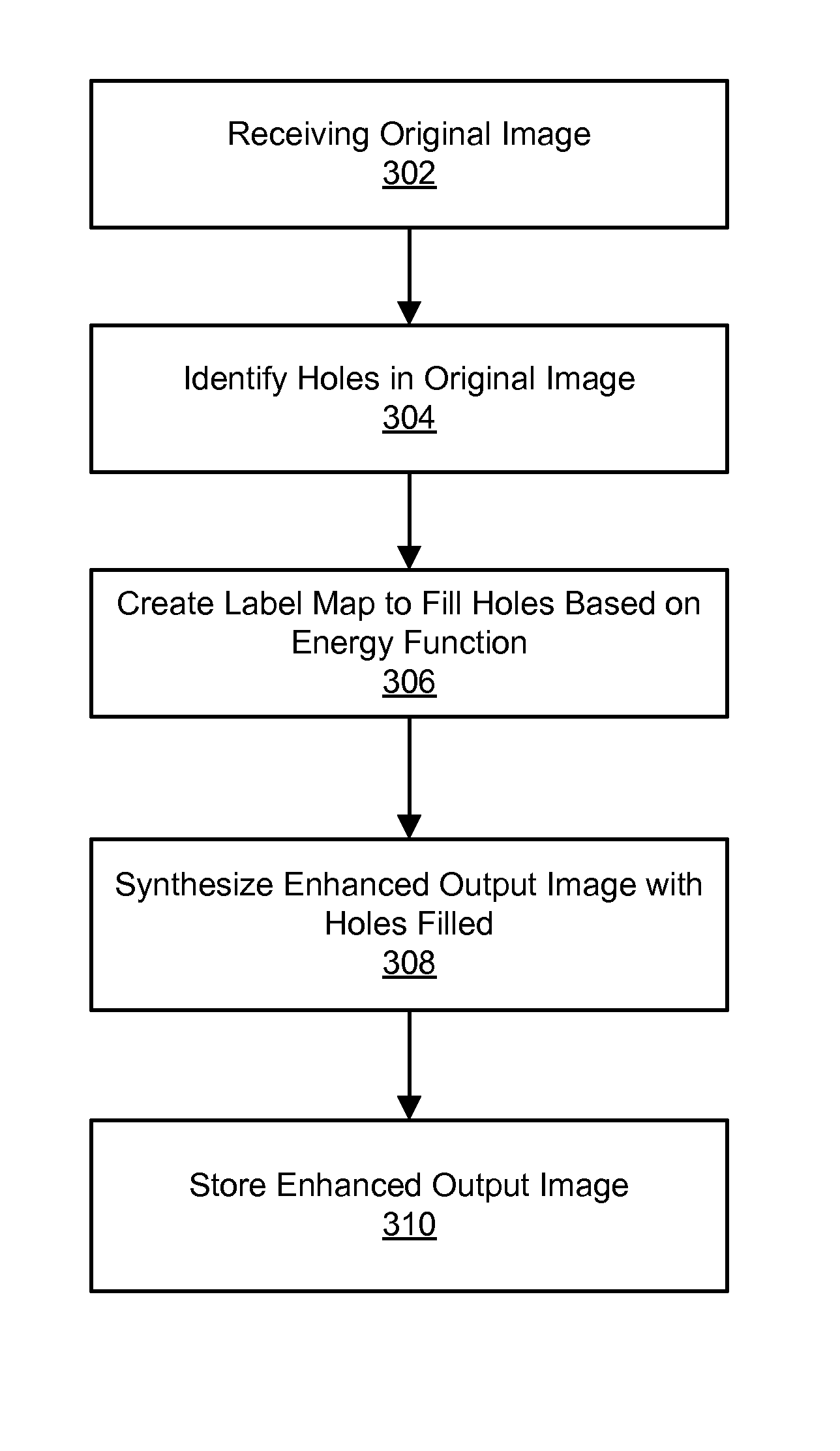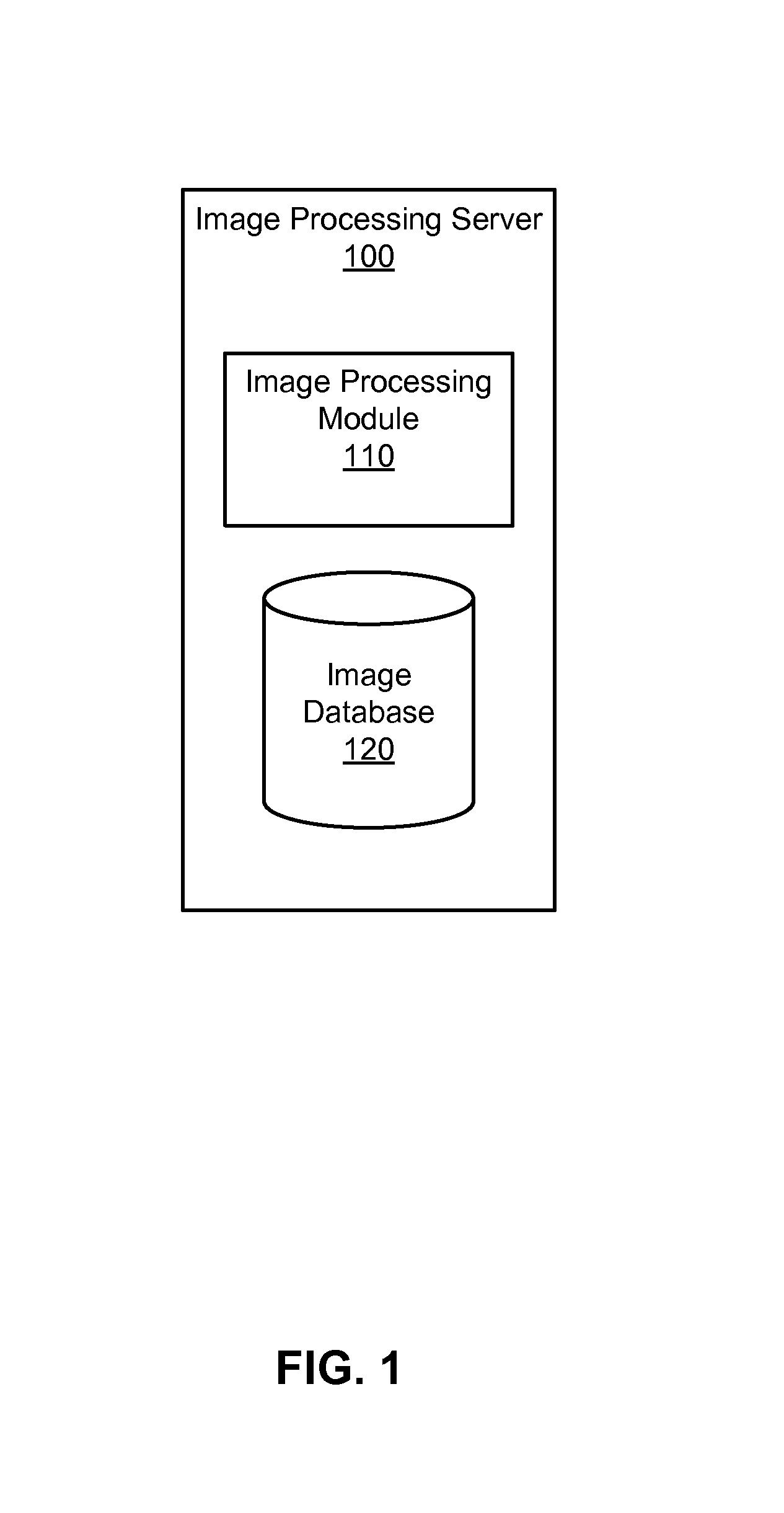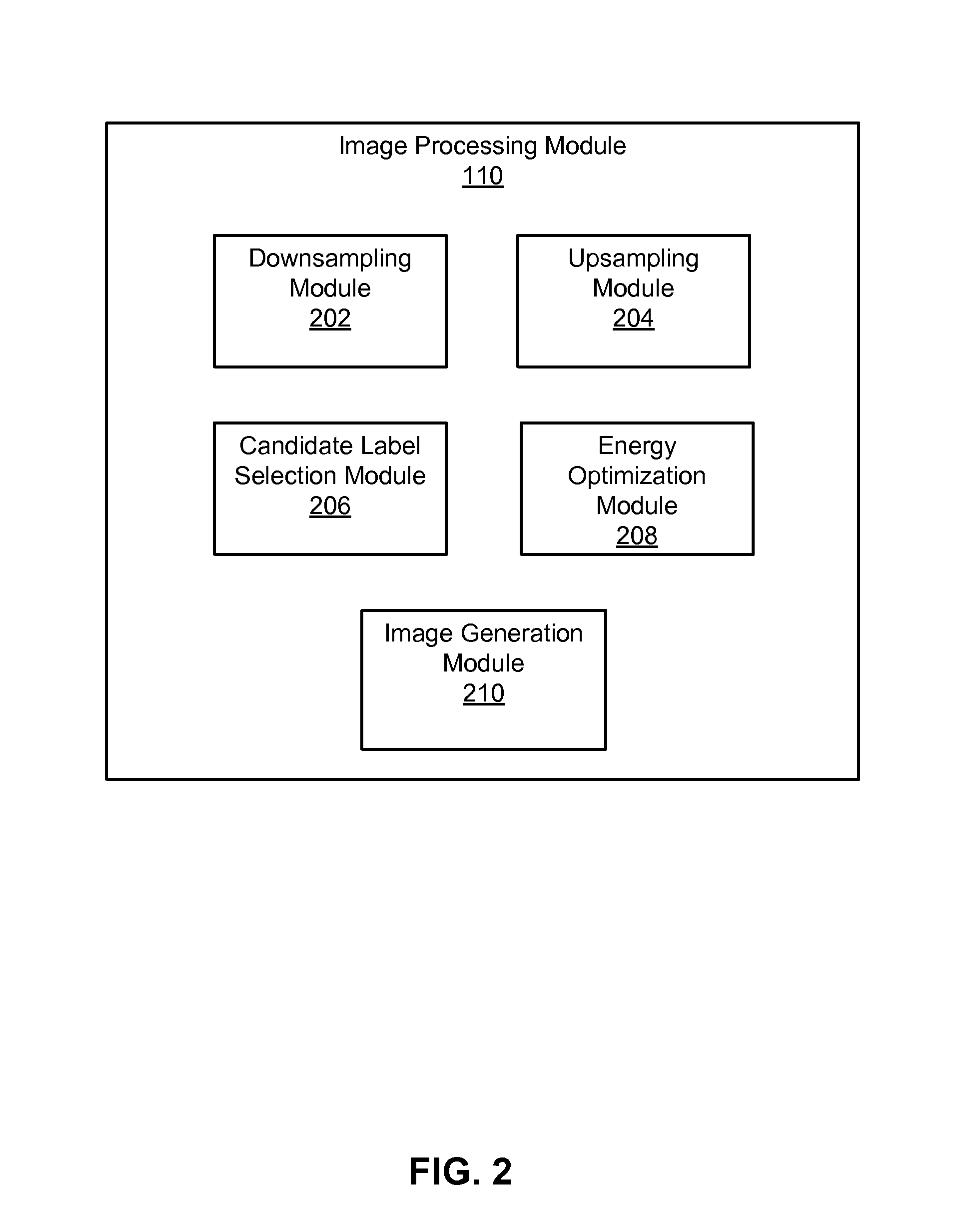Fast randomized multi-scale energy minimization for image processing
a multi-scale energy minimization and image processing technology, applied in the field of image processing, can solve the problems of low-quality viewing experience for users of the system, lack of resolution needed to provide a user with fine detail, and users with image data of less than desirable quality, so as to minimize an energy function, enhance an image, and enhance an image
- Summary
- Abstract
- Description
- Claims
- Application Information
AI Technical Summary
Benefits of technology
Problems solved by technology
Method used
Image
Examples
Embodiment Construction
[0022]FIG. 1 is a high-level block diagram of an image processing server 100 according to one embodiment. The server 100 includes an image processing module 110 and an image database 120. Only one server 100, image processing module 110, and image database 120 are shown in FIG. 1 in order to simplify and clarify the description. Embodiments can have multiple ones of these entities. Moreover, the entities can be distributed across multiple machines. For example, the image processing module 110 and database 120 can be distributed across multiple servers.
[0023]The image database 120 stores a set of images. The term “image” as employed herein includes image data in general, such as individual still image files or frames from a video file. An image I comprises a two-dimensional array of pixels. A particular pixel I(x,y) may be defined differently depending on the color space and encoding format. For example, in a RGB color space, a pixel may be defined as I(x,y)={R, G, B}, where R, G, an...
PUM
 Login to View More
Login to View More Abstract
Description
Claims
Application Information
 Login to View More
Login to View More - R&D
- Intellectual Property
- Life Sciences
- Materials
- Tech Scout
- Unparalleled Data Quality
- Higher Quality Content
- 60% Fewer Hallucinations
Browse by: Latest US Patents, China's latest patents, Technical Efficacy Thesaurus, Application Domain, Technology Topic, Popular Technical Reports.
© 2025 PatSnap. All rights reserved.Legal|Privacy policy|Modern Slavery Act Transparency Statement|Sitemap|About US| Contact US: help@patsnap.com



